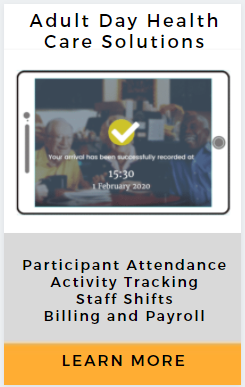The home care industry is growing very rapidly in the US and worldwide. The primary driver for this growth is the aging of the global population. The drivers for this are that life expectancy in the US has risen into the 80s (and the upper 80s for women) and every day, around 8 to 10 thousand members of the Baby Boomer Generation are reaching retirement age. This page is dedicated to introducing the sectors of the industry, explaining what they do, and looking at the market sizes. It should be noted that although the largest sectors from a financial perspective are home healthcare and home based hospice care that the personal home care sector is the fastest growing from a job creation perspective.
Here are some basic facts and stats:

Note: This report also includes basic information on near neighbor industries that are not represented in the above revenue estimates (such as Adult Day Care, Home Medical Equipment (HME), Home Infusion Therapy and supportive services like Area Agencies on Aging (AAAs) and Centers for Independent Living (CILs).
Home care enables the elderly and disabled to stay living in their own home instead of institutional care like nursing homes or mental health institutions. Most of the care is non-medical and instead assists with Activities of Daily Living (ADLs) such as dressing, grooming, light cleaning, meal preparation, and companionship.

According to this article from the US Bureau or Labor and Statistics, there were 3.4M caregiver jobs in 2019. The median pay was $25,280 per year and the market is expected to grow at a rate of 34%.
The demand for home care services is growing rapidly driven by increased life expectancy and the aging of the baby boomers. The corresponding challenge however is a shortage in caregivers. Additionally there are movements to increase minimum wage that will put pressure on profitability and will increase prices. We predict that these challenges will bring on a growth in the adult day care sector.
Home Healthcare is a medical service led by nurses and supported by physical, occupational and speech therapists. This service is reimbursed by Medicare and private insurance. The primary goal of home healthcare is for post-acute care, such as after a hip replacement to ensure that the patient recovers. Typical reimbursement is for "episodes of care" up to 60 days, but there are also some reimbursements for chronic disease care that is likely to be more ongoing.
Organizations supporting Home Healthcare include the following:
The demand for home care services is constant and growing. The effect of COVID-19 is mixed: on the positive side COVID drives an increase in demand for care at home while on the negative side it has driven a reduction in surgeries.
This part of the industry has seen a decline in reimbursement rates leading to overall lower earnings. This has resulted in consolidation.
Here's an article from Tim Rowan's Home Care Technology Report entitled NAHC Study Shows Home Health Care is in Fragile State.
In addition to home healthcare nursing (described just above), there are organizations who focus on specific therapy areas. Some therapy agencies provide services to multiple home health organizations. In the context of home health, the main therapies are physical therapy (PT), Occupational Therapy (OT) and Speech Therapy (ST), but there are other types of therapies delivered in the home as well.
Here's a list of the primary types of home health therapies:
The list of therapy types are listed above. In addition to "home health therapy" it is common to see services names tied to specific disciplines like "Home PT"
Hospice care is dedicated to the last 6 months of life. Qualifying for hospice requires a physician's order. Most hospice patients begin their care in just the last few weeks of life, whereas there are also cases of folks living for longer than 6 months after a hospice order is given or even "graduating from hospice." By accepting hospice care, the care recipient gives up their right to emergency life saving treatments in exchange for palliative care.
If you'd like to learn about elderly care and end of life from a human perspective, I highly recommend Atul Gawande's Book "Being Mortal" We've done a synopsis of each chapter of the book. You can start here.
Area Agencies on Aging (AAAs) and Centers for Independent Living (CILs) provide similar functions but to different communities. 
Area Agencies on Aging were introduced as part of the Older American's Act in 1973. They provide a variety of services to individuals 60 and older including guidance on where they can find care and other related services. Many AAAs are hired by state Medicaid programs to perform independent needs assessments on individuals who request services. A near neighbor to AAAs are Title 6 Organizations that provide similar services to native Americans.
Centers for Independent Living provide resources to the disabled, helping them to find care services and in many cases delivering these programs directly. Part of the charter of CILs is to hire disabled individuals. Their mission is "NCIL advances independent living and the rights of people with disabilities." Their vision: "NCIL envisions a world in which people with disabilities are valued equally and participate fully."
Both of these organizations have strong national organizations:
Adult Day Care is pretty much self-explanatory. These are day centers where elderly people can spend the day and enjoy meals, companionship, activities and other services. There are also adult day centers for people with disabilities. Some of the programs are more medically oriented such as PACE programs (Programs of All-Inclusive Care for the Elderly), which serve as an alternative to living in a nursing home. Others are non-medical and focused on Activities of Daily Living (ADLs).
You can learn more by visiting the site of the National Adult Day Services Association (NASDA.org)
The COVID-19 Pandemic has resulted in the closure or limited operations for many adult day centers. We, however, strongly believe that adult day care will come back very strongly once the vaccine is distributed to the majority of the elderly.
Geriatric Care Managers (GCMs) and Case Managers are professionals who advocate and provide services for the elderly and disabled with the intention of helping them to age in place successfully. 
Some of the services provided by case managers and GCMs are as follows:
Here's an article by AARP describing Geriatric Care Managers as an emerging profession.
Here's an article entitled What is a Geriatric Care Manager, provided by the National Institute on Aging (which is part of NIH).
Durable Medical Equipment (DME) and Home Medical Equipment (HME) are two terms that seem to be used interchangably. However, an industry news source HMENews, explains "Durable Medical Equipment is what we use. Home Medical Equipment is what we do."
As the name implies, this segment of the industry is providing durable medical equipment for use at home. Some top examples of DME/HME are as follows:
Other "specialized" areas include the following:
Population Health Management is an approach to improving health outcomes and quality of life for a group of individuals.
One of the mantras that we embrace is The Triple Aim of Health Care, created by the Institute for Healthcare Improvement (IHI)
Simply explained, the Triple Aim compels the health care industry to provide the best experience of care, at the lowest cost to the broadest population.
Attempts at population health are generally targeted towards the top 1 percent of the population (who account for 20% of medical spending) or the top 5% of the population who account for 50% of medical costs. This is shown in the graphic below.

Articles have been written about the triple AIM saying that there's continuous progress on better experience and lower cost, but that population health is elusive. Our outlook is that more proactive management of at risk populations can avoid preventable emergency department visits and improve medication compliance.